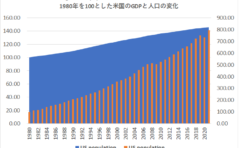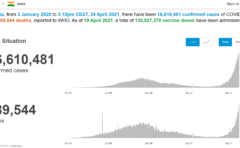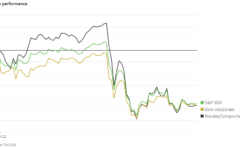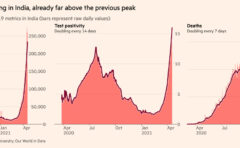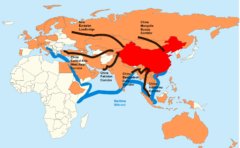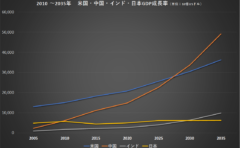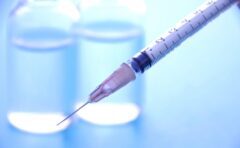What we know about the new coronavirus strain
イギリスで広がっている新型コロナウイルスの「変異体」
感染力変化の可能性!英・フィナンシャルタイムズの報道より!
新型コロナウイルスの変異体が見つかっています。
専門家は「いずれ国内に入る可能性が高い。
また、専門家の間では、
そこで、国内の報道では、
2020年12月23日 フィナンシャルタイムズ
What we know about the new coronavirus strain
新しいコロナウイルス株について知っていること
Scientists are racing to discover how infectious the variant is and if vaccines can beat it
科学者たちは、この変異体がどのように感染するか、
Scientists are scrambling to understand the new coronavirus variant that has devastated the Christmas plans of millions of people in Britain and left the UK largely isolated from the rest of the world as a result of travel bans imposed by other countries.
科学者たちは新しいコロナウイルス変異体を理解しようと競い合っ
Labelled B.1.1.7, we look at what we know and do not know about the new strain.
B.1.1.7と書かれたこの新種について、
Where did the new variant come from?
新しい変異体はどこから来たのでしょうか?
It was first detected in mid-October when the Covid-19 Genomics UK Consortium (Cog-UK) read the full genetic code of coronavirus in two samples that had been collected in Kent and London on September 20 and 21.
10月中旬に初めて検出されたのは、
But scientists did not become alarmed about B.1.1.7 until mid-December when they associated it with rapidly rising case numbers in south-east England.
しかし、科学者たちがB.1.1.
B.1.1.7 has far more mutations than in any previous variant of the Sars-Cov-2 virus analysed since the pandemic started.
B.1.1.7は、
Twenty-three letters of the viral genetic code have changed, of which 17 could alter the behaviour of the virus.
ウイルスの遺伝子コードの23文字が変更され、
They include several mutations on the key “spike protein” that it uses to enter human cells.
その中には、ヒトの細胞に入るために使用する重要な「
Virologists suspect that the multiple mutations occurred in a patient with a severely suppressed immune system who incubated Sars-Cov-2 for many weeks and then infected someone else.
ウイルス学者は、免疫系が著しく抑制された患者がSars-
These conditions are likely to supercharge the mutation process.
これらの条件は、
Efforts to trace the original “index patient” have failed. “We don’t know whether the new variant originated in the UK or was introduced from elsewhere,” said Sharon Peacock, Cog-UK director.
オリジナルの “指標患者 “を追跡する努力は失敗しました。”我々は、
How infectious is it and how far has it spread?
感染力はどのくらいで、どこまで広がっているのでしょうか?
B.1.1.7 has multiplied rapidly in London and south-east England, supplanting older variants.
B.1.1.7は、ロンドンと南東イングランドで急速に増殖し、
It was responsible for 28 per cent of infections in London by early November and 63 per cent since November 29.
ロンドンでは11月上旬までに28%、11月29日以降は63%
It is also present at much lower levels in Scotland, Wales and the rest of England.
また、スコットランド、ウェールズ、
Computer modelling of the viral spread suggests the new variant could be 50 to 70 per cent more transmissible than other Sars-Cov-2 strains circulating in the UK.
ウイルスの広がりをコンピュータでモデリングすると、
The modelling shows it may raise the R value of the virus — the average number of people to whom someone with Covid-19 passes the infection — by at least 0.4, making the pandemic far harder to control without stringent lockdown measures.
モデリングによると、ウイルスのR値(
Some specific mutations on B.1.1.7 also look as though they might make it easier to infect people.
B.1.1.7のある特定の突然変異は、
However, no laboratory studies of the transmissibility of the new virus have been completed and some independent experts were cautious about the meaning of the UK government’s modelling.
しかし、
Outside the UK, the new Covid-19 variant has been identified in Denmark, Australia, Italy, the Netherlands and Iceland.
英国以外では、デンマーク、オーストラリア、イタリア、
Scientists suspect that it has spread much farther afield than this smattering of cases would indicate.
科学者たちは、このような事例が散在していることが示すよりも、
The UK is one of the few countries doing the intensive genomic sequencing required to identify variants; Cog-UK has produced half of all the world’s publicly released Sars-Cov-2 sequences.
英国は、
“There are very few countries that look — and if you don’t look for it, you won’t find it,” said Mads Albertsen, an expert in microbial genetics at Aalborg University in Denmark.
“見ている国は非常に少ない-探さなければ見つからない “と、
“I cannot imagine that it hasn’t spread worldwide by now . . . It’s been in the UK for so long it must be in all countries around the world.”
“今までに世界中に広まっていないとは想像できない.... 英国では長く続いているので、世界中の国にあるはずです。”
Will the variant affect the immune system enough to stop Covid-19 vaccines working?
コビド19ワクチンを止めるのに十分な免疫系への影響はあるので
The vaccines completing trials and beginning mass inoculation programmes — from Pfizer/BioNTech, Moderna and Oxford/AstraZeneca — achieve protection by training the recipient’s immune system to recognise many different sites on the viral spike protein.
試験を終え、大量接種プログラムを開始しているファイザー/
Experts do not expect the mutations on B.1.1.7 to interfere with that.
専門家は、B.1.1.
“The prediction is that the new variant is unlikely to have more than a minor impact on vaccine effectiveness,” said Professor Adam Finn, a vaccine specialist at the University of Bristol.
“ブリストル大学のワクチン専門家であるアダム・フィン教授は、
Scientists at the UK government’s Porton Down microbiology labs and colleagues at the vaccine companies are racing to confirm the veracity of that reassuring prediction.
英国政府のポートン・
Ugur Sahin, BioNTech chief executive, said it was “highly likely” that the company’s vaccine would work effectively against B.1.1.7, though it would take two weeks to complete the laboratory work needed to reach a definitive assessment.
BioNTech社の最高経営責任者であるUgur Sahin氏は、同社のワクチンがB.1.1.1.
One lab test involves infecting human cell cultures with coronavirus and then exposing them to antibodies from people who have been vaccinated.
ある実験室での検査では、
The scientists then look for any differences between the ability of the antibodies to neutralise different variants of the virus.
科学者たちは、その後、
In the longer term, researchers will examine the health records of people who have been vaccinated to find out whether they are more susceptible to some variants than others.
長期的には、
Does the variant affect how ill people become if they are infected?
変異は、
Scientists are analysing the viral genetics of Covid-19 patients to discover whether B.1.1.7 might affect their symptoms.
科学者たちは、B.1.1.7が彼らの症状に影響を与えるかどうかを発見するために、
“We have had no signal,” said Judith Breuer, professor of virology at University College London.
“我々は何のシグナルも持っていなかった “と、ユニバーシティ・カレッジ・
“If it was much more virulent we would see signals emerging.”
“もっと病原性が高ければ…” “シグナルが出てくるだろう”
There is provisional clinical evidence that B.1.1.7 is increasing the “viral load” — the amount of virus present in patients’ upper respiratory tract — which is also a feature of another variant called 501.V2 that has evolved independently in South Africa.
B.1.1.1.7が「ウイルス負荷」(
This may make the new variants transmit more readily between people but it is not clear how the greater viral load would affect symptoms in those who are infected.
これは新しい変形を人々の間でよりすぐに伝えさせるかもしれませ
Might the new variant spread more easily in children?
新しい変異体は子供にも広がりやすいのでしょうか?
Adults are more susceptible than children to Covid-19 partly because the so-called ACE receptor — the gateway into human cells for the virus — changes shape as people grow up.
大人は子供よりもCovid-
Some scientists have suggested that mutations in B.1.1.7 enable the virus to enter the juvenile form of these receptors more easily.
一部の科学者は、B.1.1.7の突然変異が、
As Wendy Barclay, professor of virology at Imperial College London, put it, the genetic changes might give the virus a “more level playing field” for infecting children.
インペリアル・カレッジ・ロンドンのウイルス学のウェンディ・
But experts emphasised that this theory was unproven and urged caution.
しかし、専門家はこの理論は実証されていないと強調し、
“We are not aware of any increased incidence of the new variant in children,” said Prof Peacock.
“我々は、
引き続き、見続けていく必要がありそうです。
と同時に欧州経済への打撃も深刻です。
米国も大混乱ですが、英国、
日本、世界の混乱に太刀打ちできるでしょうか。心配です。
未来創造パートナー 宮野宏樹
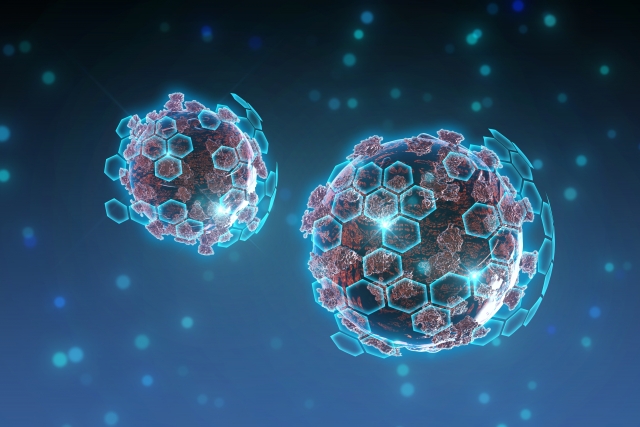


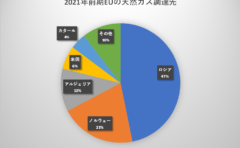

-240x148.jpg)





